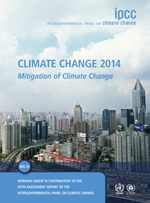 As expected, the New Zealand government’s response to the IPCC’s Working Group 3 report on mitigating climate change pays lip service to the science, while maintaining that NZ is doing all that can be expected. Climate change minister Tim Groser’s press release said that the IPCC report’s call for intentional cooperation meant that NZ is “on the right track in pressing for a binding international agreement on emissions beyond 2020” but failed to note the urgency explicit in the report.
As expected, the New Zealand government’s response to the IPCC’s Working Group 3 report on mitigating climate change pays lip service to the science, while maintaining that NZ is doing all that can be expected. Climate change minister Tim Groser’s press release said that the IPCC report’s call for intentional cooperation meant that NZ is “on the right track in pressing for a binding international agreement on emissions beyond 2020” but failed to note the urgency explicit in the report.
Groser also repeated the government’s standard response when challenged on government inaction on climate policy:
“New Zealand is doing its fair share on climate change, taking into account our unique national circumstances, both to restrict our own emissions and support the global efforts needed to make the cuts that will limit warming.”
Groser’s response to the WG2 and WG3 reports so angered Pure Advantage founder Phillip Mills that he announced he would make a $125,000 donation to the Labour and Green parties. Mills, who has been working behind the scenes for the last five years, lobbying cabinet ministers and National MPs to build a business case for climate action and clean, green business growth, told the NZ Herald:
I’ve been trying impartially to deal with National. I’ve met with John Key around this a number of times … and really I held the hope that I and groups that I’ve been involved with would be able to get National to see sense.
Continue reading “Lip service: it’s all climate action ever gets from Key & Co”

 The IPCC has just released the
The IPCC has just released the  This week’s
This week’s 
You must be logged in to post a comment.